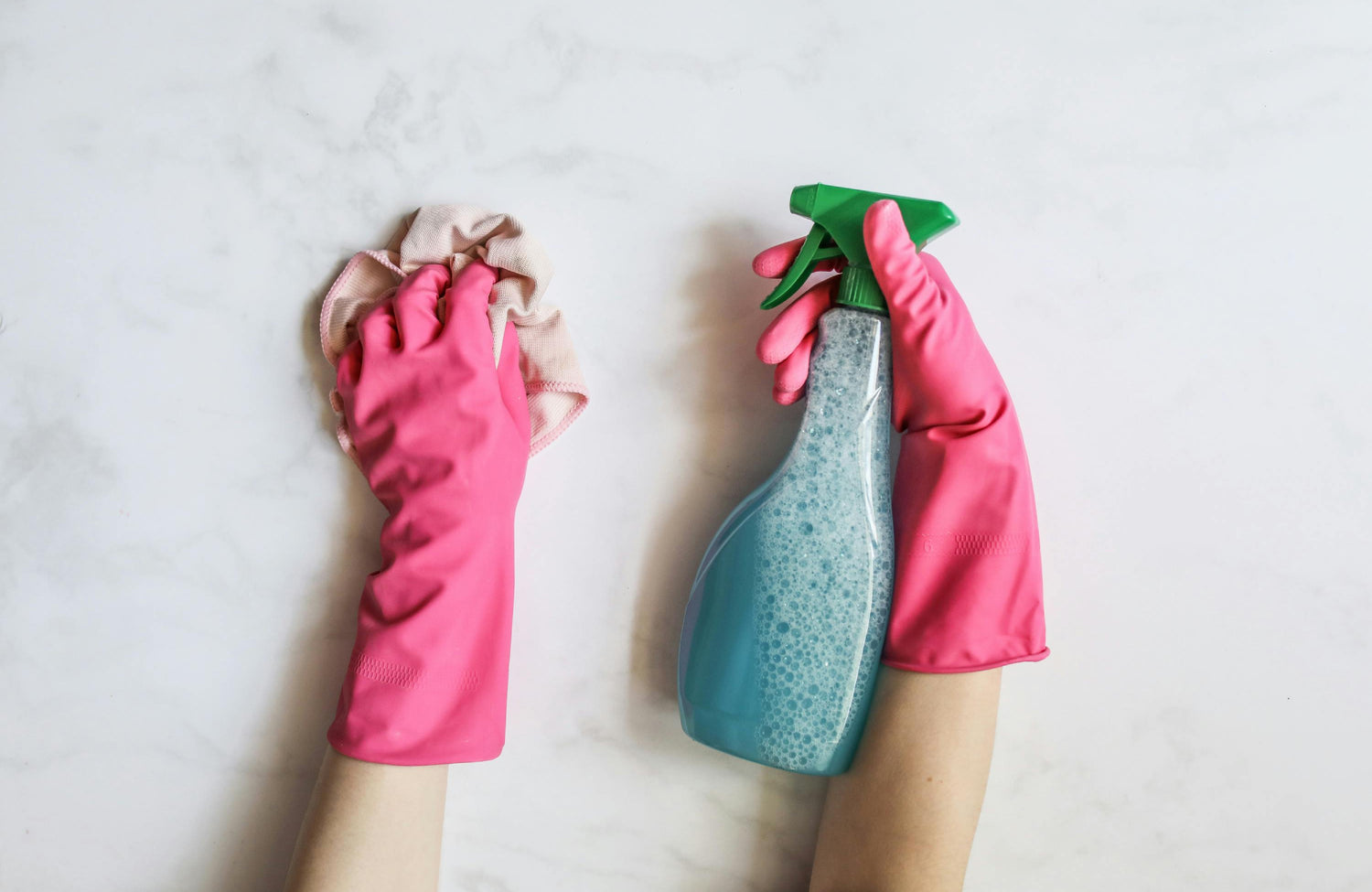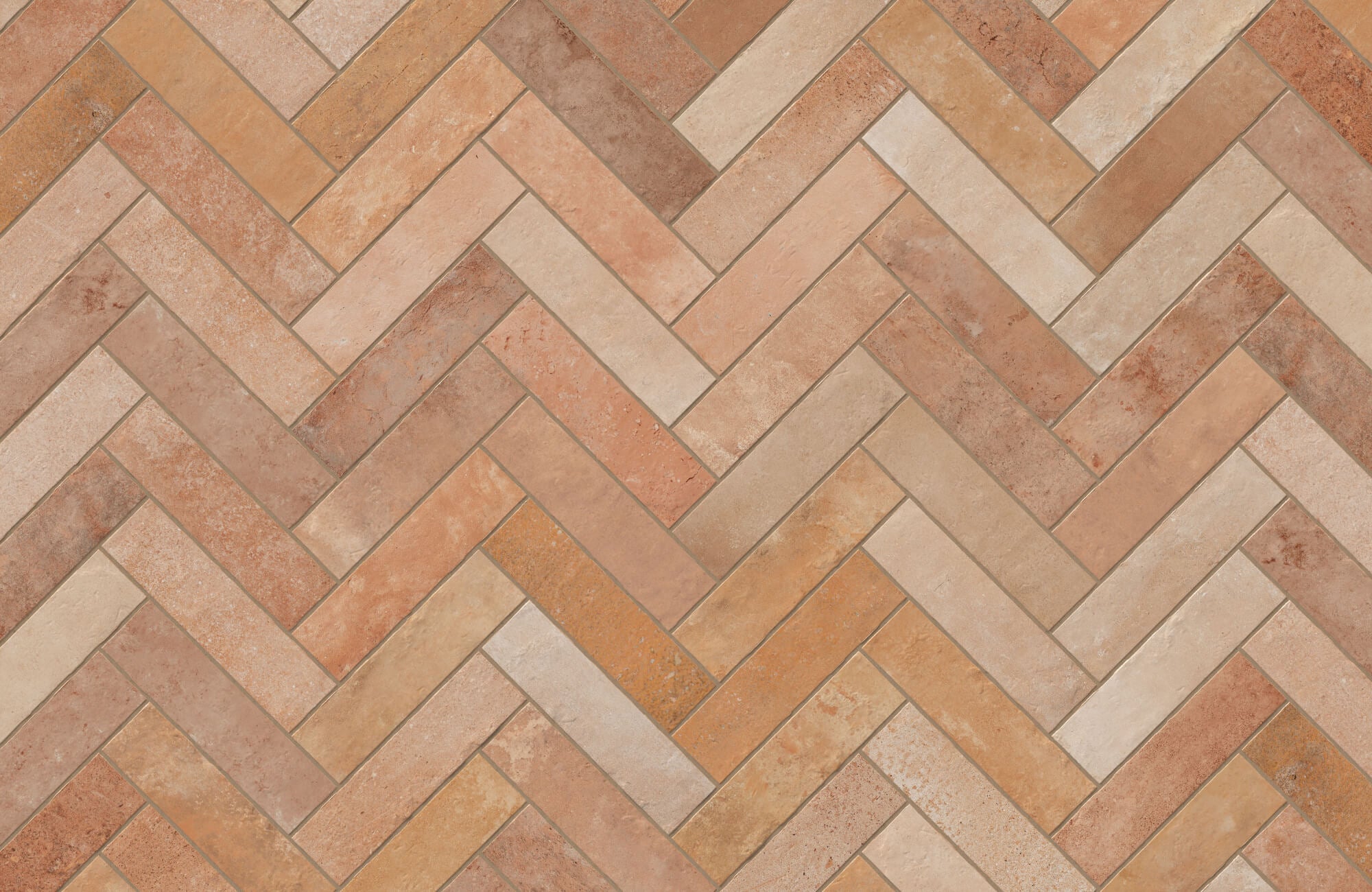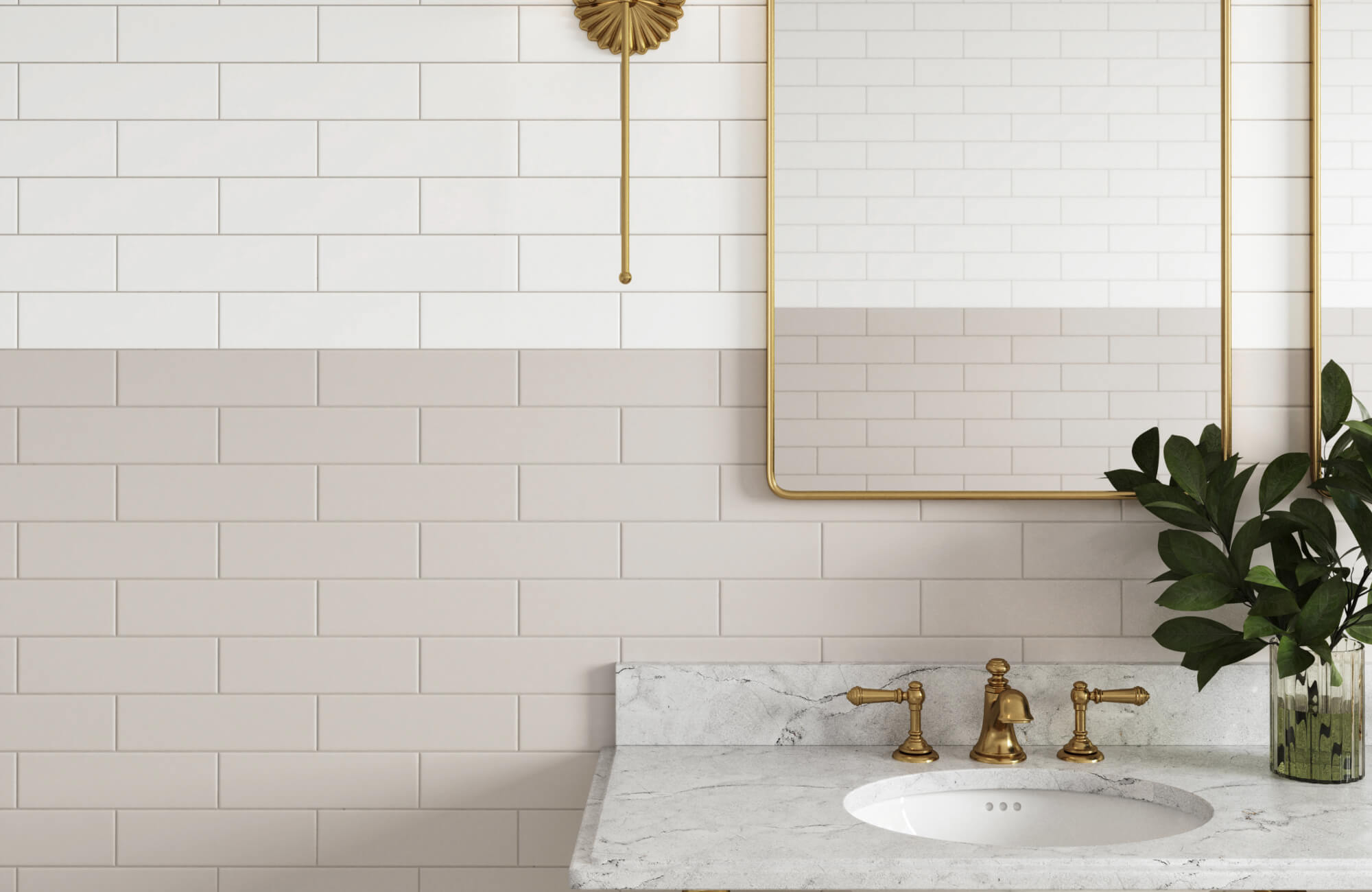Marble surfaces have long been admired for their unmatched elegance and timeless appeal, making them a staple in luxurious interiors. Whether featured on kitchen countertops or intricate flooring designs, marble effortlessly enhances the sophistication of any space. However, preserving its beauty requires meticulous care, as its porous and delicate nature makes it particularly susceptible to damage from improper cleaning methods.
In this article, we’ll guide you through selecting the perfect cleaner for marble surfaces, helping your floors and walls maintain their pristine condition. Plus, we’ll explore key factors to consider, share practical cleaning and maintenance tips, and highlight marble-look tiles as a durable and stylish alternative for busy or moisture-prone areas.
Understanding Marble Surfaces
Marble has been used for centuries in architectural masterpieces and elegant interiors, valued for its timeless beauty, distinct veining, and luxurious appeal. Marble surfaces not only add a touch of elegance to any room but also provide natural cooling properties, making them ideal for a wide range of applications, such as flooring, countertops, and walls. However, marble's porous nature and sensitivity to external factors pose unique challenges—especially in moisture-rich environments such as kitchens and bathrooms.
For example, spills of coffee, wine, or other liquids can penetrate its porous surface, leaving permanent stains if not addressed immediately. Similarly, acidic substances, such as citrus juice or vinegar, can cause etching, resulting in dull spots on the polished finish. In addition, heavy usage by people or frequent exposure to humidity can degrade the surface over time, emphasizing the importance of consistent maintenance and protective measures to keep your marble both elegant and functional.

Key Factors to Consider When Choosing a Marble Cleaner
Selecting the right cleaner for marble surfaces is critical, as using the wrong product can lead to long-term damage. For instance, pH-neutral cleaners are essential because they prevent etching and discoloration on marble floors and walls. Unlike acidic or highly alkaline products, which can erode the polished finish or leave dull spots, pH-neutral options effectively preserve marble's natural beauty while maintaining its structural integrity. These cleaners are particularly beneficial in areas like bathrooms and kitchens, where marble is frequently exposed to water and spills.
Additionally, it is crucial to avoid cleaners containing abrasives, as these can scratch the surface and wear down the protective sealant. Harsh chemicals, such as bleach, ammonia, or vinegar, should also be avoided because they weaken the stone over time. Instead, opt for eco-friendly and non-toxic cleaners as they not only maintain marble’s luster but also minimize exposure to harmful chemicals, making them an excellent choice for homes with children or pets. Remember to always check product labels to ensure compatibility with natural stone and protect your marble investment.

Choosing and Evaluating Marble Cleaners
Each option, whether spray or liquid, DIY or commercial, provides distinct advantages. Below, we'll look at how to evaluate and test cleaners to ensure they meet your marble care needs.
Spray and Liquid Cleaners
Spray and liquid cleaners are versatile options for maintaining marble surfaces, each suited to specific tasks. Spray cleaners are excellent for precise application on intricate wall details or smaller sections, while liquid cleaners provide consistent coverage for larger areas like expansive floors, making them ideal for busy spaces. Regardless of the type, always ensure the cleaner is specifically formulated for natural stone to protect marble's delicate surface and maintain its elegance over time.
DIY Solutions vs Commercial Cleaners
When deciding between DIY solutions and commercial cleaners, it’s important to consider the specific needs of your marble surfaces. DIY cleaners, like a mild soap and water mixture, are cost-effective and simple to prepare—perfect for light cleaning tasks. However, they may not provide the strength or formulation needed to effectively remove deep stains or address significant wear.
Commercial cleaners, on one hand, are specifically designed for marble care and often feature pH-neutral properties, ensuring they protect the surface while enhancing its natural beauty. They also tend to deliver consistent results, making them ideal for both busy floors and intricate wall installations. User reviews and expert recommendations are valuable for identifying trusted brands that meet the unique demands of marble surfaces.
How to Test a Marble Cleaner
Testing a marble cleaner before full application is an essential step to ensure the product's compatibility and prevent potential damage. Start by selecting a small, inconspicuous area—such as a corner or a spot hidden under furniture—and apply a small amount of the cleaner. Gently wipe it off with a soft cloth, checking for any signs of discoloration, dullness, or surface changes. If the marble maintains its original appearance without streaks or damage, the cleaner is likely safe for broader use. For optimal results and to preserve the beauty of your marble, always adhere to the manufacturer's dilution and application guidelines.

Best Practices for Regular Marble Maintenance
Maintaining marble surfaces begins with simple daily cleaning routines to prevent dirt and debris from scratching or dulling the finish. Sweeping floors with a soft broom or a microfiber mop is an effective way to remove fine particles. Additionally, using a damp, non-abrasive cloth on walls helps eliminate smudges while preserving their polished appearance.
Protective measures are equally important for extending the life of marble, especially in busy places or moisture-prone areas. For instance, placing rugs or runners in busy hallways and near entryways safeguards floors from scratches and wear. Similarly, mats placed near sinks in kitchens or bathrooms help prevent water stains and minimize moisture absorption into the stone. Furniture pads are another practical solution, offering protection against scratches caused by moving furniture while maintaining the elegance of the space.
Long-term care strategies, such as periodic resealing, play a crucial role in maintaining marble's luster and durability. Over time, the sealant that shields marble's porous surface from stains and moisture can wear down, leaving the stone vulnerable. Resealing every six to twelve months, depending on usage and exposure levels, reinforces this protective barrier. This proactive approach ensures that marble surfaces remain not only visually appealing but also resilient for years to come.
Marble Look Tiles: A Durable and Stylish Alternative
Marble-look tiles, crafted from porcelain or ceramic, seamlessly blend the timeless elegance of natural marble with the practical advantages of modern materials. These tiles are designed to replicate marble's luxurious appearance and are available in a wide range of finishes and textures, making them adaptable to both traditional and contemporary interiors.
One of the standout benefits of marble-look tiles is their exceptional durability. These tiles resist moisture, stains, and scratches, which solidifies them as an excellent choice for busy areas like bathrooms, kitchens, and entryways. Edward Martin tiles, in particular, stand out as they do not require sealing, significantly reducing maintenance demands while preserving their polished and refined look.
Maintaining marble-look tiles is also straightforward, focusing on gentle handling to protect their elegant finish. For regular upkeep, it's best to use a mild detergent diluted with water along with a soft mop or cloth to ensure the surface is cleaned without abrasive materials that could scratch or dull the tiles. Additionally, thoroughly rinsing the tiles after washing prevents any buildup of cleaning agents, which helps maintain their sleek, polished appearance. This easy-care approach not only preserves the tiles' beauty but also enhances their durability and aesthetic appeal in any setting.
If you want to see how the right marble look tile can transform your home space, use our augmented reality (AR) tool to view different colors and finishes in real-time. It's a great way to test out different options and see how each tile choice affects your interior design before making a final decision.
The Cleaner You Choose Makes a Difference
Choosing the right cleaner is critical to maintaining the natural beauty and durability of your marble floors and walls. By using pH-neutral and non-toxic cleaners, you can protect marble surfaces from damage and keep their polished elegance over time. Regular maintenance, including proper cleaning routines and preventive measures, is also essential for ensuring that your marble retains its charm and functionality in any setting.
For homeowners seeking a low-maintenance alternative, marble-look tiles are an excellent option. These tiles offer the luxurious appearance of marble while delivering superior durability and ease of care, making them ideal for areas subject to frequent use or moisture exposure. If you have any questions or need personalized advice, feel free to contact us! Our team is here to help you make the best choices for your flooring and wall design needs.









